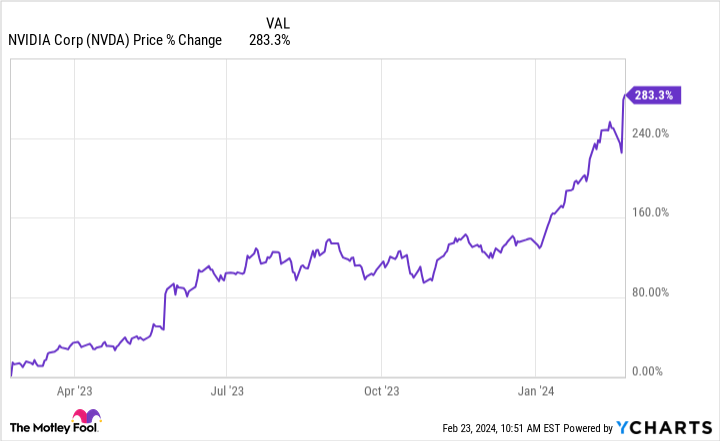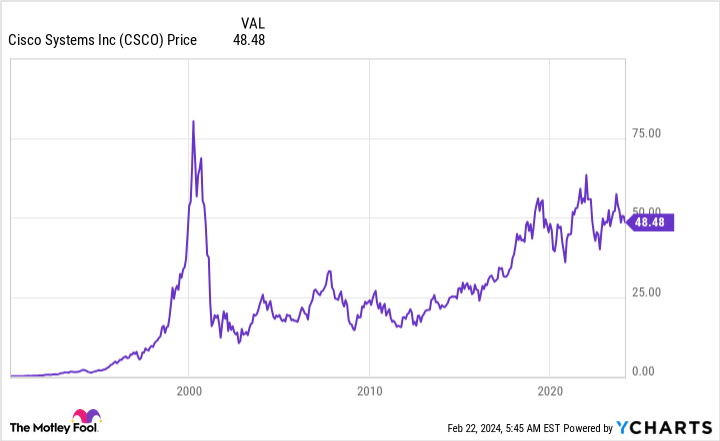Too many new investors go from zero to 100 miles an hour. I know — that’s exactly what I did when I started out. There are all sorts of reasons why this happens, many of which go back to how human emotions work. Take it from someone who made a lot of early investment mistakes: A much better path is to start investing slowly with the goal of learning as you go.
With the advent of exchange-traded funds (ETFs), which didn’t exist when I started out, you can learn and invest with relative ease. There are many options you could start with, but a really good one is the Vanguard S&P 500 ETF (NYSEMKT: VOO).
Why start slow?
It’s important to understand that everyone (everyone!) makes investing mistakes. Nobody’s perfect, and nobody has all the answers. The problem is that very few investors, particularly successful ones, spend much time talking about their mistakes. It’s far more enjoyable to discuss the winners.
The issue here is that, when you start out, a single investment mistake can wipe you out. Emotionally, that might result in you never investing again, which would probably be bad for your long-term finances.
The solution is to stop yourself from jumping in with both feet and risking everything on a single investment. For example, Nvidia (NASDAQ: NVDA) is a hot stock today, with all sorts of positive things being said about it. But the stock is up over 250% in a year, which is an incredible gain in a very short period of time. A new investor might look at that and think that the stock can’t lose, expecting it to keep going up and up. It’s an artificial intelligence play, after all, and that’s the big thing right now.
Nvidia might keep rising, but anyone who’s been around Wall Street long enough knows that trees don’t grow to the sky. Eventually, mercurial investors will find another hot theme and drop Nvidia. It’s a pattern that repeats with great consistency for reasons ranging from a slowdown in a company’s growth trajectory to, frankly, just plain boredom among investors. As an example, shares of Cisco Systems (NASDAQ: CSCO), another tech name, still haven’t recovered to the peak levels they reached before the dot.com crash at the turn of the century.
The best way to avoid getting caught up in Wall Street’s hype machine is to start broadly and then slowly start to dip your toes into buying individual stocks. The Vanguard S&P 500 ETF will let you do just that.
What is the Vanguard S&P 500 ETF?
Exchange-traded funds are pooled investment vehicles in which many investors provide capital to a professional manager that invests for the group. One of the biggest benefits of this is that the pooled investment vehicle can usually buy a more diversified portfolio than any single member of the pool could on their own. The Vanguard S&P 500 ETF invests in the stocks that make up the S&P 500 Index, as its name implies.
The S&P 500 Index is one of the most commonly used market barometers. You will find the “story” behind the performance of your investment in the Vanguard S&P 500 ETF very easy to track. That will help you learn as you invest. And, because it is a broad market proxy, you will have a diversified portfolio that will help to limit the damage that comes from owning poorly performing stocks (remember, even the best investors make mistakes).
The S&P 500 Index is a curated list meant specifically to represent the U.S. economy. So there’s a bit of human intervention in the mix, and the overall portfolio won’t likely get too heavily focused in any one area. That said, the index is market cap weighted, so the largest companies get the largest allocation of cash. Usually the biggest companies are also among the best performing, so this subtle way of focusing a little more on a few stocks is generally a net benefit.
The best part, however, is that the Vanguard S&P 500 ETF is shockingly cheap to own, with an expense ratio of just 0.03%. So one single investment gets you exposure to around 500 stocks (and all of the benefits, like diversification, that go with that) and all you pay is 0.03%, which is a really, really low number on Wall Street. The only potential negative is that the dividend yield is a tiny 1.4% or so, but that’s to be expected given the size of the portfolio.
Start with the ETF and prepare for the next step
So start yourself out by opening a brokerage account and buying the Vanguard S&P 500 ETF. Keep saving money and putting it into this diversified market proxy. And read all you can about investing and the market. When you have a little bit of money built up, take a few thousand dollars — no more than 5% or 10% of your nest egg — and buy a single stock. If you like the experience, keep learning and doing more investing. If you don’t, you can just stick with the Vanguard S&P 500 ETF for the rest of your life.
Should you invest $1,000 in Vanguard S&P 500 ETF right now?
Before you buy stock in Vanguard S&P 500 ETF, consider this:
The Motley Fool Stock Advisor analyst team just identified what they believe are the 10 best stocks for investors to buy now… and Vanguard S&P 500 ETF wasn’t one of them. The 10 stocks that made the cut could produce monster returns in the coming years.
Stock Advisor provides investors with an easy-to-follow blueprint for success, including guidance on building a portfolio, regular updates from analysts, and two new stock picks each month. The Stock Advisor service has more than tripled the return of S&P 500 since 2002*.
*Stock Advisor returns as of February 20, 2024
Reuben Brewer has no position in any of the stocks mentioned. The Motley Fool has positions in and recommends Cisco Systems, Nvidia, and Vanguard S&P 500 ETF. The Motley Fool has a disclosure policy.
What’s the Best Way to Invest in Stocks Without Any Experience? Start With This Index Fund. was originally published by The Motley Fool












